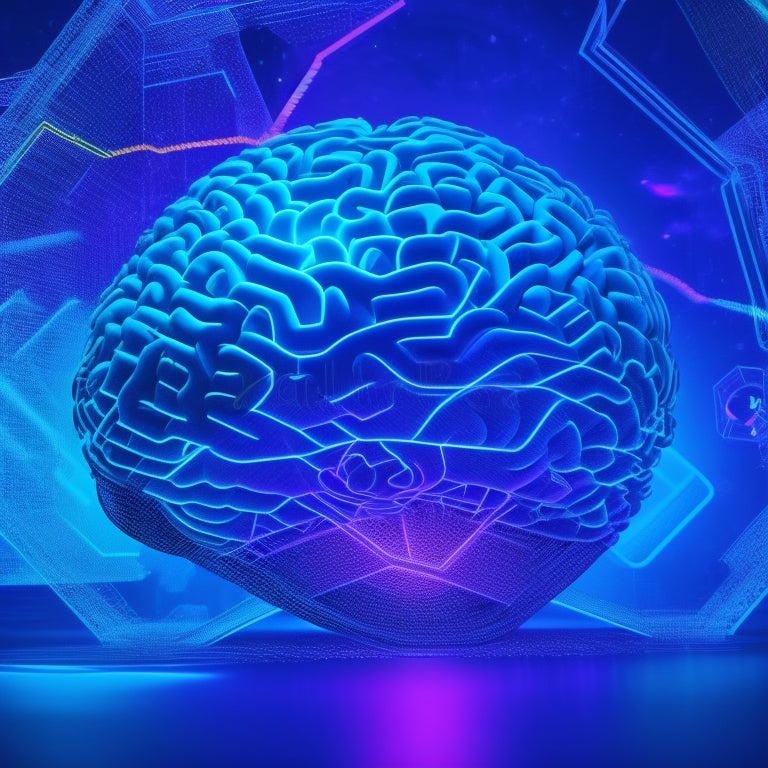
Unleashing Mind Mapping Strategies for Enterprise Triumph
Share
You're poised to revolutionize your organization's approach to analysis, idea generation, and collaboration by tapping into the transformative power of mind mapping strategies. Embrace a holistic approach, visualizing intricate relationships and interdependencies to foster a deeper understanding of your organization's ecosystem. Then, amplify idea generation and creativity by revealing innovative solutions and identifying patterns between ideas. Collaborative content creation and planning become streamlined, and efficient techniques maximize your mind mapping potential. By harnessing these strategies, you'll discover new heights of enterprise triumph - and that's just the beginning of what's possible.
Key Takeaways
• Embrace a holistic approach to enterprise analysis by visualizing intricate relationships and interdependencies between departments and stakeholders.
• Amplify idea generation and creativity by utilizing mind mapping strategies to reveal innovative solutions and identify patterns between ideas.
• Streamline collaborative content creation and planning by adopting mind mapping techniques that facilitate remote collaboration and version control.
• Master efficient mind mapping techniques to organize complex information clearly and concisely, enabling informed decision-making.
• Unleash the full potential of mind mapping by focusing on advanced visualization techniques to drive enterprise triumph.
Holistic Enterprise Analysis Strategies
By embracing holistic enterprise analysis strategies, you can break free from the constraints of traditional compartmentalized thinking and instead, visualize the intricate web of relationships between processes, systems, stakeholders, and external factors that drive your organization's success.
This approach enables you to identify interdependencies and synergies across integrated systems, fostering a deeper understanding of your organization's ecosystem. Through stakeholder engagement, you can capture diverse perspectives and needs, ensuring that your strategies are aligned with the interests of your customers, partners, and employees.
Amplifying Idea Generation and Creativity
As you begin on the journey of amplifying idea generation and creativity, you'll find that mind mapping strategies can reveal a treasure trove of innovative solutions, empowering you to think outside the box and tackle complex challenges with confidence.
Through creative brainstorming, mind maps facilitate visual connections, helping you identify patterns and relationships between ideas. This sparks idea expansion, allowing you to dive deeper into subtopics and uncover new paths for exploration.
By applying mind mapping to your content strategy, you'll be able to generate a wealth of innovative ideas, organize them effectively, and prioritize the most promising ones.
Collaborative Content Creation and Planning
In today's fast-paced digital landscape, you're likely no stranger to the challenges of collaborative content creation, where multiple stakeholders, diverse perspectives, and tight deadlines can easily give rise to creative chaos.
As you navigate these complexities, mind mapping emerges as a powerful tool to streamline your collaborative content creation and planning processes. By leveraging mind maps, you can facilitate remote collaboration, ensuring seamless communication and teamwork among stakeholders.
Additionally, version control features enable you to track changes, revisions, and contributions, guaranteeing that the final content reflects the collective input of your team. With mind mapping, you can orchestrate diverse perspectives, prioritize tasks, and allocate resources effectively, ultimately yielding high-quality content that resonates with your target audience.
Mastering Efficient Mind Mapping Techniques
You're ready to take your mind mapping skills to the next level by adopting efficient techniques that maximize its potential in enterprise analysis. To do this, focus on advanced visualization techniques that help you organize complex information in a clear and concise manner.
This will enable you to identify patterns, connections, and dependencies that might've gone unnoticed otherwise.
Streamlined requirements gathering is another key area to master. By using mind maps to capture functional and non-functional requirements, you'll be able to trace priorities and make informed decisions.
Frequently Asked Questions
Can Mind Mapping Be Used for Personal Goal Setting and Task Management?
"Imagine a mental canvas overflowing with vibrant ideas! You can harness mind mapping's power for personal goal setting and task management, achieving goal clarity and priority setting, and transforming your to-do lists into actionable, results-driven masterpieces."
How Do I Handle Conflicting Ideas and Opinions in Collaborative Mind Mapping?
When handling conflicting ideas in collaborative mind mapping, you facilitate Conflict Resolution by encouraging open discussion, identifying common goals, and applying Idea Prioritization techniques, such as voting or categorization, to reach a consensus.
Are Mind Maps Suitable for Presenting Complex Data to Non-Technical Stakeholders?
Like a master chef presenting a culinary masterpiece, you can use mind maps to serve complex data to non-technical stakeholders, facilitating stakeholder buy-in through data visualization that's easy to digest and understand.
Can I Use Digital Mind Mapping Tools for Real-Time Collaboration With Remote Teams?
You can leverage digital mind mapping tools for real-time collaboration with remote teams, facilitating cloud sharing and virtual brainstorming sessions that spark innovation, accelerate decision-making, and drive collective understanding among team members.
How Do I Ensure Mind Maps Remain Relevant and Up-To-Date Throughout a Project's Lifecycle?
To keep mind maps relevant, you'll regularly refresh your project's visual landscape, leveraging version control to track changes, ensuring your map accurately reflects evolving project needs and stakeholder input throughout the lifecycle.
Related Posts
-
How to Use Instagram's Feature
Instagram's shoppable videos feature has revolutionized the way brands connect with their audience and drive sales o...
-

10 Essential Integrations for Seamless Online Learning
You're already utilizing digital tools for online learning, but seamless experiences require more. You need to integr...
-

How Do I Improve SEO on My Shopify Website
This article examines methods to enhance search engine optimization (SEO) on Shopify websites. It begins by discussi...

